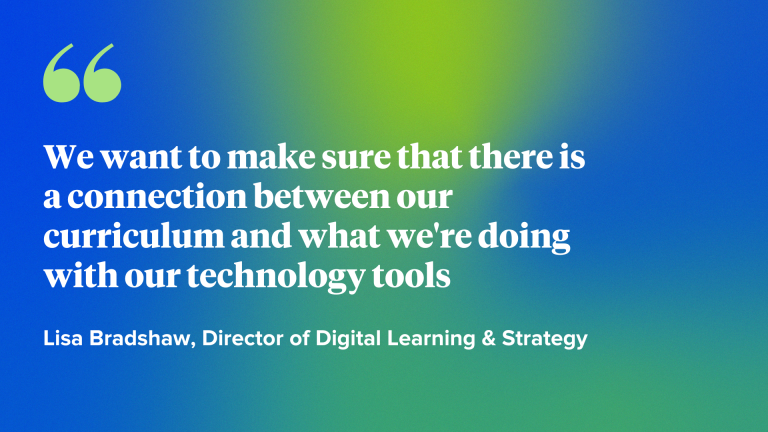
District leaders want to make informed decisions when it comes to the products they invest in and realize maximum return on investment. Making these decisions involves many stakeholders, so it is crucial that there is an efficient way to communicate and collaborate between teams.
In this webinar, we teamed up with two district leaders to hear how they collaborate and measure academic return on investment. The panelists, Lisa Bradshaw, Director of Digital Learning & Strategy, and Stacy Gray, Digital Learning Coordinator from Casa Grande Elementary School District in Arizona, shared how usage of purchased edtech tools and student academic growth impacts their decisions. In partnering with LearnPlatform by Instructure, they are able to generate the evidence necessary to inform their decisions in a collaborative and efficient way.
“LearnPlatform is not just an IT tool – it is used by many stakeholders in our district. We want to make sure that there is a connection between our curriculum and what we're doing with our technology tools. The data we collect from LearnPlatform is critical to making evidence-driven decisions for teaching and learning.”
– Lisa Bradshaw, Director of Digital Learning & Strategy
The panelists provided insight into how LearnPlatform’s engine for running rapid-cycle evaluations aids in the communication and transparency between key stakeholders. Ensuring an open line of communication was critically important, as it had been a challenge the district faced in the past. With the varying perspectives and responsibilities that each stakeholder has, having a centralized system in place to support streamlined communication and processes was essential – this is where LearnPlatform’s Inventory Dashboard plays a key role.
“Start small and look at what is most important. You cannot do everything alone or all at once – prioritize what you need first and grow as you go.”
– Lisa Bradshaw
To build a strong foundation between departments, Gray finds it helpful to have regular meetings to discuss findings, evaluations and feedback. This allows for members to be on the same page and informed on the state of their edtech investments.
You cannot jump right into a brand new decision making process without having a foundation of data to build upon and ensure key stakeholders have a baseline understanding of what the data means for students and educators. For an edtech ecosystem to be effective, running evaluations and gathering feedback should be an iterative process that unfolds over time.
Gray also emphasized the importance of having a diverse mix of stakeholders. Just as each student is different, so are your colleagues – having a variety of perspectives involved when making evidence-based decisions proves effective for implementation, learning and engagement.
“By not having a variety of voices in your stakeholders, you run into a separation of tasks, work gets doubled, and decisions are made without input from everybody.”
—Stacy Gray, Digital Learning Coordinator from Casa Grande Elementary School District
To improve implementation of tools and bridge the gap between teaching and technology to get the best return on investment, district leaders can collaborate with our team to run rapid-cycle evaluations. It is a process that cannot be done independently – LearnPlatform’s approach offers a modern, collaborative space for key stakeholders to communicate and make decisions backed by evidence.
Related Content
 Teaching-With-Tech-10-Benefits.jpg
Teaching-With-Tech-10-Benefits.jpgBlogs
 cidilabs.png
cidilabs.pngBlogs
 canvas_x_tg_logo_lockup_780_x_520.png
canvas_x_tg_logo_lockup_780_x_520.pngBlogs
